ikfoundation.org
Promoting Natural & Cultural History
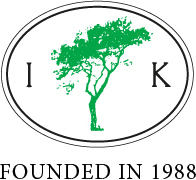


ESSAYS |
NATURAL DYES, ICELANDIC WOOL & FLAXSEED
– Trade in 1842
This essay will give a glimpse of goods in stock from a mid-19th century shop in southernmost Sweden. The firm Luttropp & Andersson in Malmö sold the most varied items to their customers – such as nails, Norwegian herring, champagne, sugar, coffee, spare parts to ploughs, buttons, yarn, flaxseed, dyes and wool. The aim is to analyse the textile-connected wares – accompanied by four images – which reveal traditions and uses in a historical context of such raw materials in a city of just over 10,000 inhabitants and mercantile links to its surrounding rural areas.
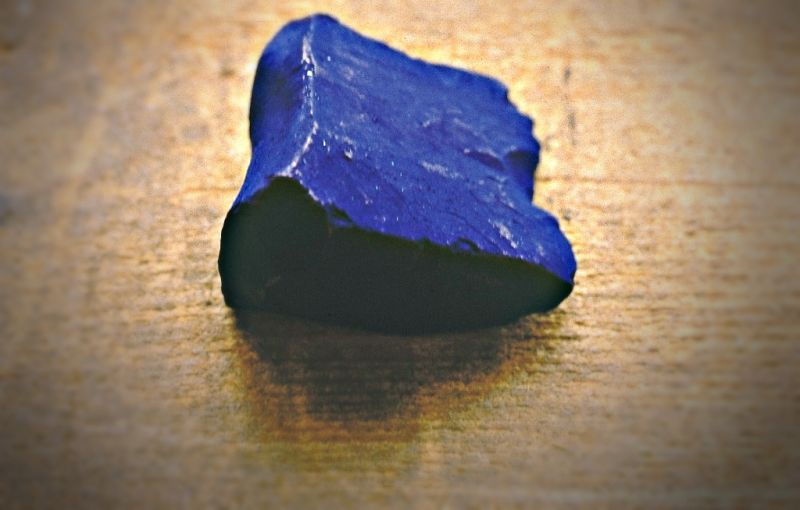 Imported indigo could have been sold at Luttropp & Andersson’s business in 1842 as grains or as a hard pressed fragment of a once larger indigo cube, which was ground to fine powder before dyeing. Photo: The IK Foundation, London.
Imported indigo could have been sold at Luttropp & Andersson’s business in 1842 as grains or as a hard pressed fragment of a once larger indigo cube, which was ground to fine powder before dyeing. Photo: The IK Foundation, London.Natural dyes valued at 1,060 Daler in copper coins [Rixdollar copper coin] were listed to be in stock at Luttropp & Andersson’s in total. Exactly which ‘dyestuffs’ are not mentioned, but it may be assumed that indigo, cochineal and common madder were included and possibly also other imported dyes such as brazil wood, orchil or sumach. Indigo was, for example, exceptionally popular for blue shades in the nearby area of Malmö. It was used for dyeing woollen cloths or yarn in a home environment and for art-woven tapestries and embroideries. The red dyes, cochineal and common madder similarly so. Furthermore, the old trade guilds still existed in 1842, as this strict rule for dyers and other trades first came to an end in Sweden four years later. Due to this circumstance, the professional dyers – part of the workforce in the textile industries of Malmö – were also potential customers for natural dyes from such a shop. Some years later, when freedom of trade was introduced, two separate dye works were founded: in 1850, the dye works of Metzen and in 1869 of Dahlström.
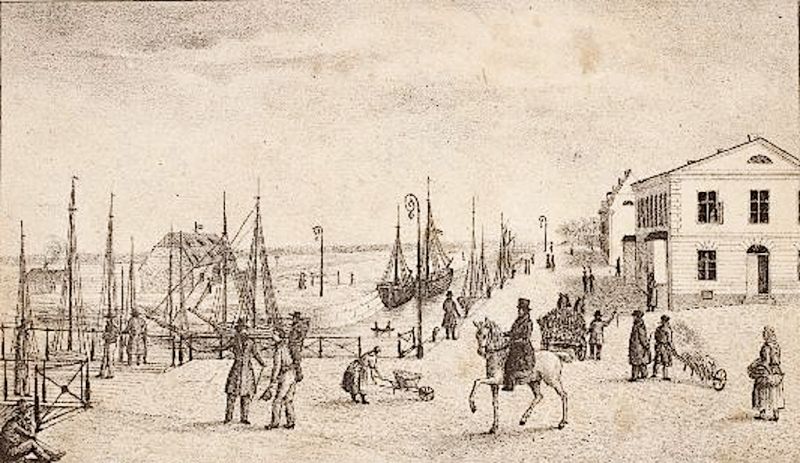 A contemporary view of Malmö from 1843 shows the harbour and sailing ships, a place where much of the imported goods sold at the establishment of Luttropp & Andersson must have entered the city. Lithograph by Carl Conrad Dahlberg. (Courtesy of: Malmö Museum, No: MM 002215:007).
A contemporary view of Malmö from 1843 shows the harbour and sailing ships, a place where much of the imported goods sold at the establishment of Luttropp & Andersson must have entered the city. Lithograph by Carl Conrad Dahlberg. (Courtesy of: Malmö Museum, No: MM 002215:007). Flaxseeds, valued at 2,858 Daler in copper coins, were also included in the goods of stock. The linen manufacturing in Malmö (described in an earlier essay of this series) had already ended in the early 19th century. Some weavers established new businesses in connection to various manor houses in the countryside. However, the significant demand for flaxseed – and linen thread for weaving, among other uses – continued or even increased as it became more and more popular to possess ample storage of damask- and diaper tablecloths with napkins.
Furthermore, research by the late textile historian Ernst Fischer demonstrates that the weaver family Nyman had a clientele of wealthy customers. In the 1840s, Anders Nyman was managing the family business, which took orders from the noble families of the county, but also vicarages, well-to-do farmers, and Malmö bourgeois were regular customers. In preserved order books, for example, the merchant families Kockum and Bager can be traced together with consul Runnerström. The general rule was that the customer supplied the weaver with suitable linen thread for each and every type of fabric so that linen thread may have been purchased in a local shop, spun by a servant, or ordered from a spinner. In many vicarages, the wife, daughters and female servants alike produced linen cloths of various qualities on one or more looms. Fischer mentioned, for instance, that in the vicarage of Tygelsjö, situated close to Malmö – here, the women wove complex damask linen towels in a pattern with stripes and scattered flowers.
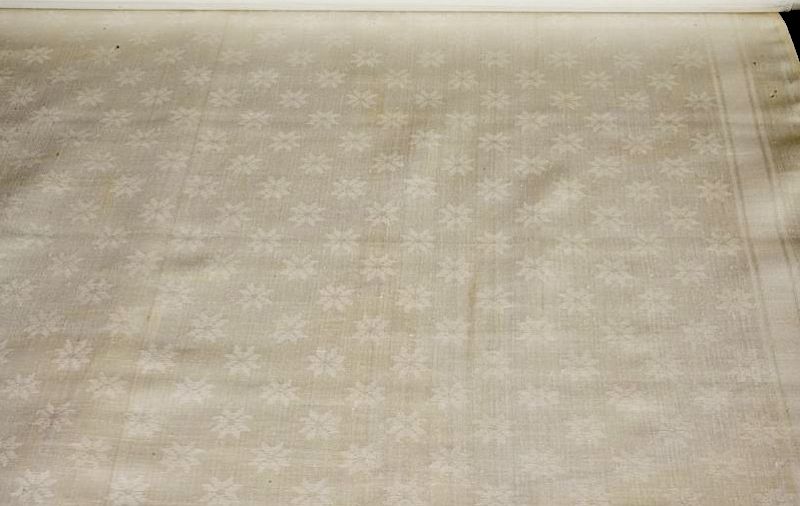 An example of linen damask woven by Anders Nyman (1779-1858). This fine napkin (71x78 cm) with star-motif is dated 1842. (Courtesy of: Malmö Museum, No: MM 027633).
An example of linen damask woven by Anders Nyman (1779-1858). This fine napkin (71x78 cm) with star-motif is dated 1842. (Courtesy of: Malmö Museum, No: MM 027633).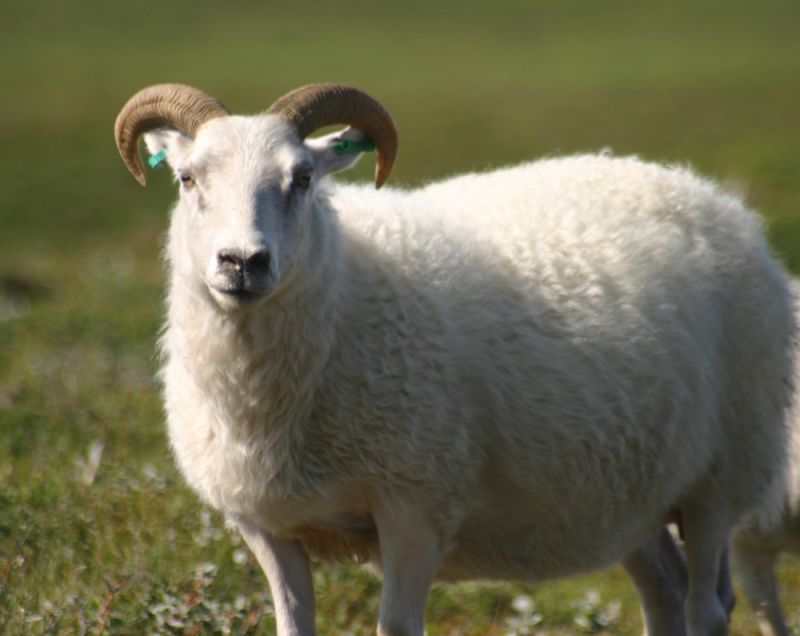 An Icelandic sheep, demonstrates the type of white wool – or varieties of grey or brown shades – which was sold in the Malmö shop in 1842, probably transported via sea from Iceland ca 2,500 kilometres away. (Photo: Wikimedia Commons).
An Icelandic sheep, demonstrates the type of white wool – or varieties of grey or brown shades – which was sold in the Malmö shop in 1842, probably transported via sea from Iceland ca 2,500 kilometres away. (Photo: Wikimedia Commons).The shop’s storage of Icelandic wool must have been substantial as it was valued at 12,000 Daler in copper coins. The wool was most probably imported from Iceland, but attempts had been made already in the late 18th century to establish this type of sheep in Sweden. Research by the late historian Sven T. Kjellberg gives examples of the initial popularity of the Icelandic sheep originating in its fine wool quality and suitability for a cold climate. Unfortunately, the positive characteristics were hard to reach in the new country, and the animals often died of various illnesses. Attempts were also made in the county of Skåne where Malmö is situated, well up to the 1830s, but with the same poor result. However, the firm Luttropp & Andersson must have had some concern about the saleability of this product, as the main part (11,749 Daler in copper coins) was kept in commission or paid to an agent first when sold.
Notice: A large number of primary and secondary sources were used for this essay. For a full Bibliography and a complete list of notes, see the Swedish article by Viveka Hansen.
Sources:
- Bjurling, Oscar ed., Malmö stads historia, D. 3, 1820-1870, Malmö 1981 (p. 336: Storage of goods at Luttropp & Andersson in 1842).
- Fischer, Ernst, Linvävarämbetet i Malmö och det skånska linneväveriet, Malmö 1959.
- Hansen, Viveka, ‘Fyra sekel Malmö textil – 1650 till 2000’, Elbogen pp. 23-91, 1999 (pp 51-53).
- Kjellberg, Sven T, Ull och Ylle, Lund 1943.
- Malmö Museum, Sweden (Online collection, two images & information – catalogue cards).
ESSAYS
The iTEXTILIS is a division of The IK Workshop Society - a global and unique forum for all those interested in Natural & Cultural History from a Textile Perspective.
Open Access essays - under a Creative Commons license and free for everyone to read - by Textile historian Viveka Hansen aiming to combine her current research and printed monographs with previous projects dating back to the late 1980s. Some essays also include unique archive material originally published in other languages, made available for the first time in English, opening up historical studies previously little known outside the north European countries. Together with other branches of her work; considering textile trade, material culture, cloth manufacturing, fashion, natural dyeing and the fascinating world of early travelling naturalists – like the "Linnaean network" – from a Global history perspective.
For regular updates, and to make full use of iTEXTILIS' possibilities, we recommend fellowship by subscribing to our monthly newsletter iMESSENGER.
been copied to your clipboard




– a truly European organisation since 1988
Legal issues | Forget me | and much more...
It is free to use the information/knowledge in The IK Workshop Society so long as you follow a few rules.
 LEARN MORE
LEARN MORE








